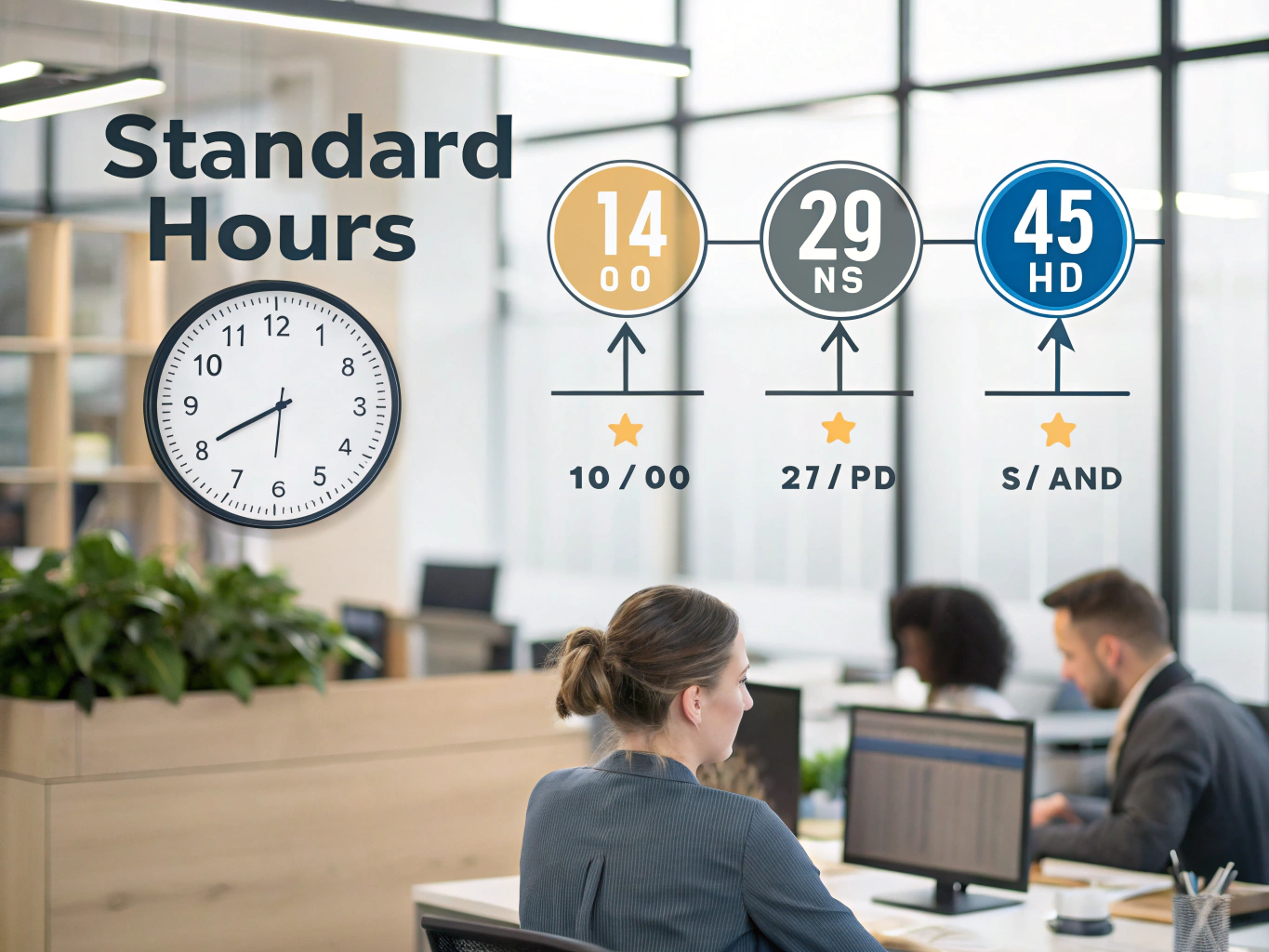Definition
Standard Hours refer to the typical number of hours an employee is expected to work within a week, which is generally around 40 hours, or 8 hours a day, from Monday to Friday. This framework helps set the expectations for both employers and employees, establishing a consistent rhythm to the workweek that promotes productivity and work-life balance.
Key Components
Understanding Standard Hours is essential for creating a structured work environment. Here are the key components that define this concept:
- Set Work Hours: Standard Hours typically encompass a 40-hour workweek, which breaks down to 8 hours each day. Most employees start their day between 8:00 and 8:30 AM and finish around 5:00 PM. This consistency helps establish a routine that can enhance overall productivity.
- Breaks and Rest Periods: During a standard workday, employees usually receive two paid 15-minute breaks—one in the morning and one in the afternoon. These breaks are vital for maintaining energy levels and focus throughout the day.
- Overtime Compensation: If employees work beyond the standard 40 hours, they are eligible for overtime pay, typically at a rate of 1.5 times their regular hourly wage. This is important for motivating employees to manage their time effectively while ensuring they are fairly compensated for extra work.
- Flexible Arrangements: Some organizations offer flexible working hours or alternative schedules, such as a four-day workweek, where employees might work 10-hour days. This flexibility can lead to improved job satisfaction and retention.
- Full-Time Employment Status: Employees working the standard hours are generally classified as full-time, which often comes with benefits like health insurance, paid time off, and retirement contributions. Understanding this classification can help employees gauge their benefits eligibility.
Importance in the Workplace
Standard Hours play a crucial role in shaping workplace culture and employee satisfaction. For instance, by adhering to a consistent schedule, employees can plan their personal lives more effectively. Imagine a parent who knows they’ll finish work by 5 PM every day—it allows them to coordinate family activities, attend school events, or simply enjoy some downtime without the stress of unpredictable work hours.
Moreover, understanding Standard Hours helps organizations manage productivity and performance. If everyone knows the expectations and can plan their workflows accordingly, it leads to a more efficient and harmonious work environment.
Best Practices
Implementing and managing Standard Hours effectively can enhance workplace satisfaction and productivity. Here are some best practices to consider:
- Communicate Clearly: Make sure all employees understand what Standard Hours entail. Use team meetings, emails, and onboarding materials to clarify expectations regarding work hours, breaks, and overtime policies.
- Offer Flexibility: Consider offering flexible working hours or remote work options. This can help accommodate different lifestyles and personal responsibilities, making your organization more attractive to top talent.
- Monitor Workloads: Keep an eye on employee workloads to prevent burnout. If employees are consistently logging overtime, reassess project timelines or staffing to ensure a balanced workload.
- Encourage Breaks: Promote the importance of taking breaks during the workday to recharge. Encourage employees to step away from their desks, grab a coffee, or take a short walk. This can significantly boost morale and productivity.
- Review Policies Regularly: Regularly assess and update your Standard Hours policy to reflect changes in the workplace or industry standards. Engage employees in this process to ensure policies remain relevant and effective.
Legal Considerations
When it comes to Standard Hours, it’s important to stay compliant with labor laws. In the United States, the Fair Labor Standards Act (FLSA) establishes guidelines on working hours and overtime pay. Employers are required to pay employees time-and-a-half for any hours worked over the standard 40-hour workweek, excluding certain categories of employees who may be exempt. Understanding these legal implications helps protect both employers and employees from potential disputes.
Additionally, any adjustments to Standard Hours should be documented and communicated clearly to avoid misunderstandings. Having a written agreement helps both parties have a reference point and ensures compliance with labor laws.
Conclusion
Grasping the concept of Standard Hours is essential for anyone navigating the workplace, whether you’re an HR professional or a job seeker. It lays the groundwork for understanding work expectations, compensation, and overall workplace culture. By fostering an environment that respects and adheres to these hours, you can enhance employee satisfaction, improve productivity, and cultivate a healthy work-life balance. Remember, a well-structured workweek not only benefits your employees but also contributes to the overall success of your organization.




